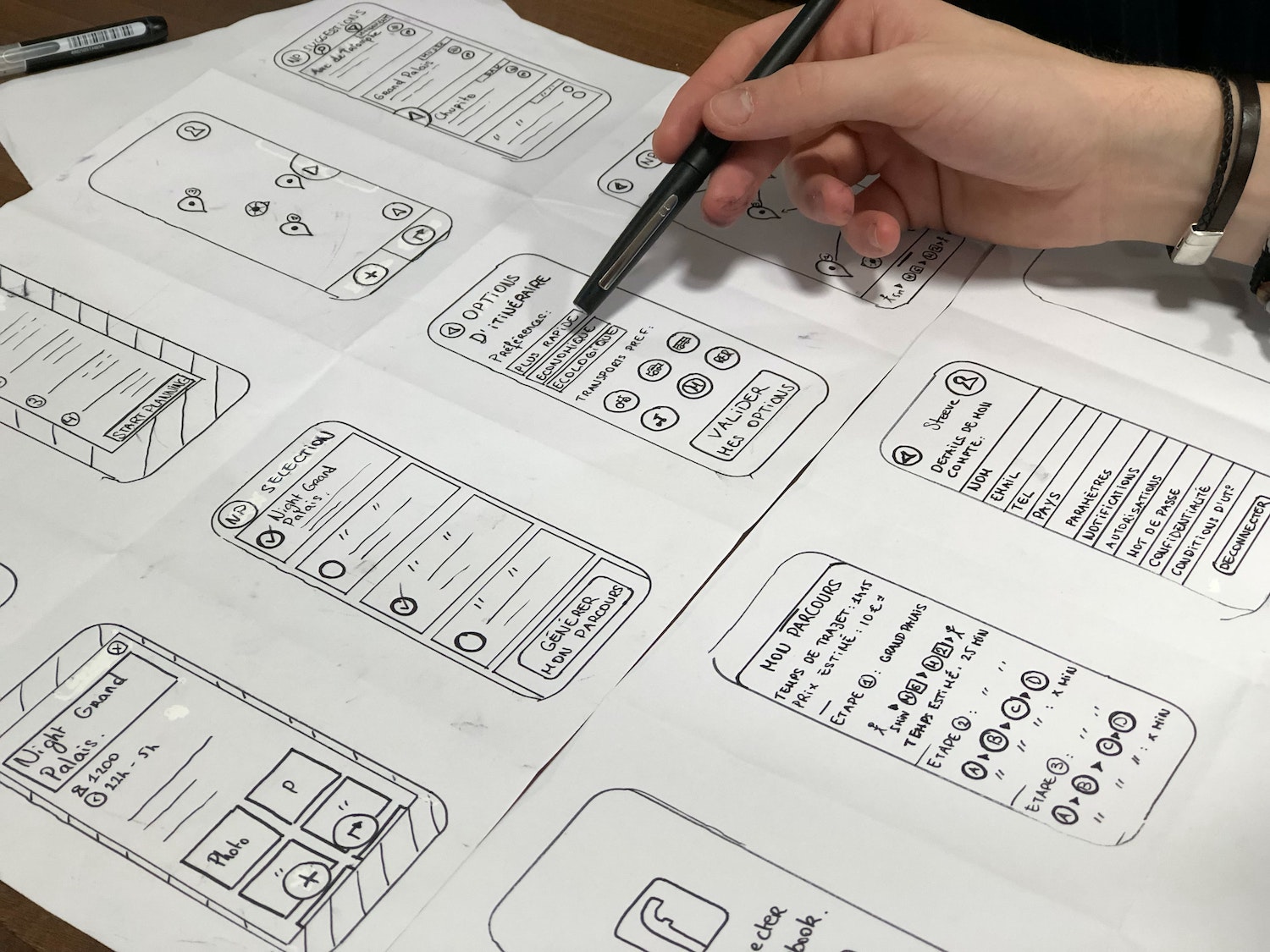
Software development process – here’s how a software agency works on your project
Table of Contents
It doesn’t matter if you work at a small startup or a large enterprise; outsourcing software development can be tricky. After all, it means that someone is carrying out the software development process, and you have no control over it. However, experienced software development agencies are transparent about their processes and ensure that work proceeds smoothly by setting up workflows and communication methods.
If you’re wondering about what happens to a project when it lands in the hands of a software development team, this article is for you.
Read on, and you’ll get answers to the following questions:
- What are the core activities of a software process?
- What are the essential steps in building software? What do they include and why teams need them?
- What are the factors that impact the speed of software development?
- What can development teams do to accelerate the process and deliver quality code?
Software development process: core activities
Building software is a complex and challenging task. Every team and organization approaches the problem in a different way but following standardized methodologies such as agile.
Still, these four activities are part of every software development process:
- Specification or requirements – this is where the team and other project stakeholders define the main functionalities of the software they’re planning to build, as well as the limitations they pose to the process.
- Design and implementation – the team develops and implements software according to the pre-defined specification.
- Verification and validation – this is where the team makes sure that the software being developed conforms to the specification and meets the customer needs identified in the business requirements.
- Maintenance and scaling – the team takes care of the software’s maintenance, modifying and scaling it so that it meets the changing consumer and market requirements.
Key steps in software development process
It doesn’t matter which software development methodology a team uses – you can be sure that the software agency has its employees follow specific steps that are part of building software products.
Note that the steps we outline below tend to occur in this order. But there are no fixed rules when it comes to the software development process. Some teams mix these steps together in a way to have them occur in parallel.
Note: The traditional, waterfall method of developing software usually takes each step in turn. The agile methodology – which is the leading method for building software today – packs all these steps into short, repeating cycles. These cycles are called sprints, and they usually last two weeks. Have a look at this article to learn more about the agile methodology of software development.
Here are the seven key steps that are part of every software development process:
1. Planning
During this initial stage of the project, the team sits together with the project and product manager to agree on a number of factors that will influence the development process.
For example, the team will discuss the following aspects of the project:
- Allocating human and material resources,
- Scheduling the project,
- Planning the capacity,
- Estimating costs,
- Provisioning of resources.
This step is essential, and if carried out poorly may have a massively negative impact on the entire development process. The strategic outputs of planning are project plans, procurement requirements, cost estimations, and schedules. Together, they form a blueprint for the team to follow and ensure the successful development of the project.
2. Requirements analysis
Business and development teams need to communicate at some point about the business requirements of the project. If they fail to do so, the software might be irrelevant to the user group the company is looking to engage. The requirements phase is essential because that’s when the team gathers requirements from business stakeholders.
Product managers, architects, and teams work with them to document key business processes and use cases that are to be automated or optimized with software. If the development team follows the agile methodology, the output of this phase is a backlog of tasks to be performed during the project.
3. Software design and prototyping
Once the team understands the project requirements, software architects and developers set down to design the application architecture. The design process consists of standardized patterns used for both architecture and software development. For example, architects often use frameworks such as Invision to build an application from existing components, fostering standardization, and reuse.
Design patterns also allow solving algorithmic problems consistently. Teams might also engage in rapid prototyping at this stage to compare different solutions and find the best match. They generate design documents listing the patterns and components, and code developed in rapid prototyping sessions.
4. Programming
In this phase, the development team is busy coding the software. Depending on the methodology, the process might either be carried out in time-boxed sprints or follow a single block of effort (in the case of the waterfall). The team needs to keep in touch with business stakeholders throughout the process to ensure that the project is going in the right direction. The output of this process is testable and functional software.
5. Testing
The testing phase is key because delivering quality software without testing is next to impossible. Developers test for code quality, performing unit testing, integration testing, performance testing, and security testing. Teams often automate testing with Continuous Integration tools to produce software ready for deployment to a production environment.
6. Deployment
Experienced software development agencies usually automate this process using a Continuous Integration model – with the help of a tool like Jenkins. That’s how they make sure that it’s fast and streamlined. This phase results in the release of working software to production.
7. Maintenance
Once the building phase is over, the development team monitors the software to make sure it’s operating properly. If bugs or defects are discovered in production, the team addresses them instantly. To make sure that fixes don’t cause other problems (this is called regression), developers have them flow through an abbreviated software development process.
What factors affect the time it takes to the software development process?
Estimating software development is so challenging because there are many factors that may affect the development process.
Here are some of the most common and important ones:
- Staff issues – sick leaves, late arrivals, productivity, and experience of individual software developers,
- Unforeseen defects or customer requests,
- System or environment issues,
- Library or software issues,
- Required research,
- Underestimation (this one is very common!),
- Unforeseen problems with maintainability, scalability, performance, testability,
- Architectural flaws or imperfections,
- The time it takes to develop mockups, prototypes, PoC, MVP, etc.
- Problems related to administration.
All of the above make estimating software development very difficult because they only come into the light once the team starts to code. Fortunately, experienced software development companies have a range of methods that allow a more accurate estimation.
How to speed up the software development process
Development teams lose most time on addressing the mistakes made during software development. Sometimes it might also be the question of automating aspects of software development. Here are three steps they take to mitigate the risk of these errors and protect themselves against them.
Continuous Integration
The idea behind Continuous Integration (CI) is keeping software in a functional state. Before CI, development teams wrote thousands of lines of code and then tried to integrate them. This caused a lot of problems – the process was time-consuming, tedious, and – most importantly – prone to error. By automating it with CI, teams can build software every time the code changes. The CI tool will alert the team about any problems. All in all, CI helps to prevent defects from progressing into software, ensuring that it’s as bug-free as possible.
Source control
Development teams need to use a central source control repository – otherwise, both the code and process are at risk. By using source control, teams ensure that the work is stored in a single place, on a regular basis. If a workstation or file server fails, it’s not a problem – because everything is saved in the central repository,
Software Development Life Cycle (SDLC) management systems
Developing large and complex applications can lead to difficulties in tracking. Fortunately, teams can use SDLC management tools to mitigate this risk. Such tools offer help in bug tracking, task management, and analytics – all to improve the decision-making process. The larger your project, the more indispensable the tools become.
Software development process – conclusion
Developing software is a complicated and challenging process. But an expert software development agency like Concise Software equips its team with tools that help to accelerate and streamline software development through automation and other features.
Are you looking for a team of experienced software engineers? Get in touch with us; we help companies to build software using battle-tested processes, tools, and methodologies.
This may interest you:
Developing a Minimum Viable Product? Here’s a 3-Point MVP Checklist
Website development cost – how to estimate web development projects?
How to set a software project budget?
How to estimate product backlog effectively
Everything you need to know about Sprints in project management
Project Manager Roles and Responsibilities in a software project
Product Owner Roles & Responsibilities for Software Projects
Software development outsourcing – is it worth it?
Thinking about the MVP? RAT could be much better
Outsourcing Software Development Trends in 2023


